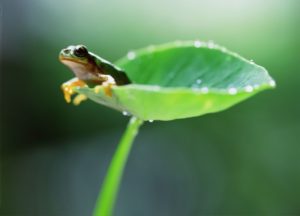 This is an overview course of Biology that came about due to a huge number of requests I’ve had from parents that report their kids/students are either “not getting it” or just so bored that they are resisting learning science at all. Even if you haven't done biology at all yet, you can still work your way through this course and get a lot out of it using the experiments described below.
This is an overview course of Biology that came about due to a huge number of requests I’ve had from parents that report their kids/students are either “not getting it” or just so bored that they are resisting learning science at all. Even if you haven't done biology at all yet, you can still work your way through this course and get a lot out of it using the experiments described below.
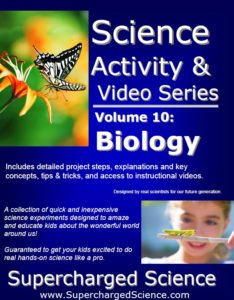 If you've got a student who's struggling to even like biology at all, I suggest starting this quick and easy Getting Started in Biology Guide to get them going before starting this overview course. This PDF guidebook works well for even students who are already excited and ready to go with biology! Inside you'll learn how to make a laser microscope so you can see the critters swimming around in pond water, measure the size of a molecule using dish soap, extract DNA with rubbing alcohol, and more!
If you've got a student who's struggling to even like biology at all, I suggest starting this quick and easy Getting Started in Biology Guide to get them going before starting this overview course. This PDF guidebook works well for even students who are already excited and ready to go with biology! Inside you'll learn how to make a laser microscope so you can see the critters swimming around in pond water, measure the size of a molecule using dish soap, extract DNA with rubbing alcohol, and more!
The Course The videos and experiments listed below are in sequence, so all you have to do is click the links below in order and watch the step-by-step instructional videos for each experiment. Most experiments have data logs and worksheets with them as well in addition to exercises to answer with each one. After you've completed this course, you will dive into Units 16 through 19 for the remainder of the content. Again, this course is a bird's eye overview of biology before you dive into each area.
This Biology overview course is ideal for junior high and high school students who are working on their first-year biology course. The course focuses on general biology. the scientific method, classifications, microscopy, biochemistry, cellular biology, genetics, dissection, and ecosystems. We’ve added extra experiments in addition to the ones in the book, so look them over and see which experiments you’d like to do, and then see if you can figure out a way to perform the experiment with the materials and equipment you already have. Have fun!
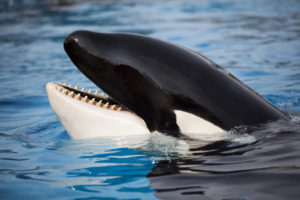 If you love plants, animals, insects, and strange puzzling challenges, then this is the area of science for you. We’re about to see and do the kind of science that was not in your typical textbooks. Without biology, there would be no cure for diseases, and we wouldn’t understand which foods are the right ones to eat, why we have to brush our teeth and wash our hands, which water we can drink without getting sick, and athletes couldn’t figure out how to improve their performance. Biology helps us understand how life works so we can make the most effective use of that information, like how to clean up our environment or grow better crops without exhausting the soil.
If you love plants, animals, insects, and strange puzzling challenges, then this is the area of science for you. We’re about to see and do the kind of science that was not in your typical textbooks. Without biology, there would be no cure for diseases, and we wouldn’t understand which foods are the right ones to eat, why we have to brush our teeth and wash our hands, which water we can drink without getting sick, and athletes couldn’t figure out how to improve their performance. Biology helps us understand how life works so we can make the most effective use of that information, like how to clean up our environment or grow better crops without exhausting the soil.
In this course, you’ll get to discover how plants detect not only sunsets but also gravity, how to make a live cell laser microscope and observe organisms in their natural environment, how to extract DNA from food in your kitchen, how bacteria can be used to turn motors to generate energy, new types of biological energy conversion scientist have discovered, measure the size of a molecule using dish soap, and so much more! We’re going to cover quite areas of biology in this course, including zoology, biochemistry, molecular biology, ecology, botany, astrobiology, marine biology and more. We are going to discover how to be a real biologist in the field as well as learn the big concepts in biology and how they tie into both physics and chemistry.
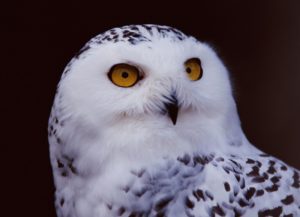
You don’t have to be a genius in order to do this – anyone that works through this course step by step can do it, and I am here to help you every step of the way. If you’re in middle school or high school and have never done biology before, you can do this overview course! No previous experience is required.
Biology does contain some math. Now before you panic or roll your eyes, note that you don’t need a high level of math in order to complete this course. I am going to walk you through every step of the way, and it’s best if you learn the math right alongside the science so that you can really understand why you’re learning that math stuff in the first place.
What is Biology?
Biology is the science that studies all living organisms. There are tons of different ways you can do if you’re interested in biology at all, and quite of few of these overlap! We’re going to cover quite a few of these in today’s class, including zoology, biochemistry, molecular biology, ecology, botany, astrobiology and more.
So this is a big area of science, and I could spend all day going through every kind of living thing on the planet and bore you with all the details about its special habits and where to find it, but honestly, you’d forget about most of what I talk about, and it’s really just too much information to squeeze into an overview course. A lot of typical biology classes deal with memorizing lots of little facts and details about a huge amount of things, and those are things you can easily find in a biology textbook.
Instead what I thought I would do is hit the highlights about what a real biologist is and how they spend their time, show you the big concepts in biology and how they tie into both physics and chemistry, and if you find there’s something you’d like to know more about, just make a note and you can go look up after class. You can get a good high school or college level biology textbook as a reference book from your local library so you have it to help answer your questions as we go along together.
So how do we start? First...
Step 1: Get organized.
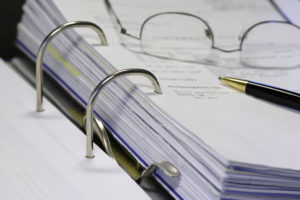 You'll need a three-ring binder, a pencil, and a printer because this course has a lot of biology experiments, many of which have downloadable worksheets and data sheets that you can print out. I recommend building your science notebook incrementally as you go along, using a three-hole punch on the worksheets you print out and complete and sticking it in a binder. You can also print out the individual homework sets that accompany each section, complete those and also stick them in the binder. Snap photos of yourself doing the experiments and paste them in, and you'll have one amazing science notebook journal at the end of the year!
You'll need a three-ring binder, a pencil, and a printer because this course has a lot of biology experiments, many of which have downloadable worksheets and data sheets that you can print out. I recommend building your science notebook incrementally as you go along, using a three-hole punch on the worksheets you print out and complete and sticking it in a binder. You can also print out the individual homework sets that accompany each section, complete those and also stick them in the binder. Snap photos of yourself doing the experiments and paste them in, and you'll have one amazing science notebook journal at the end of the year!
If you'd like to keep a more rigorous science journal, you'll want to check out my complete How to Keep Scientific Journal instructions. These are the ones I had my college students prepare with every lab they performed.
Step 2: Download the workbook and shopping list for the course.
Science isn't really science without equipment to perform your experiments, and biology is full of them because it has its roots (sorry for the pun!) in both physics and chemistry! But that doesn't mean it has to be expensive or extensive. You'll find most of these items are things you already have around your house or you can pick up from the grocery store in town.
The worksheet includes a shopping list of materials for the experiments outlined in the video below. It also includes places to write down ideas and answers to questions during the videos of this course. In addition to printing out the worksheet, you'll also want to print out the lab worksheets that go with the experiments (links are right under each video as appropriate) and stick those in your binder also.
Click here to download the course syllabus here.
Step 3: Watch videos below in order.
You can jump around within this course, however, it's important to watch the first two videos before you launch into the rest of the course. All the videos below include instructional content and most of them also include hands-on experiments to further illustrate what we just learned with the content. They are both interspersed together so you get to do experiments as you learn about the concepts and academics at the same time.
You'll also learn how to design experiments so you can measure and take data, make sense of your data and turn it into not only results to a problem but make solutions and recommendations based on scientific evidence through the experiments they set up themselves.
Are you ready to get started on your journey in Biology? Let's go!
Click here to get started!
